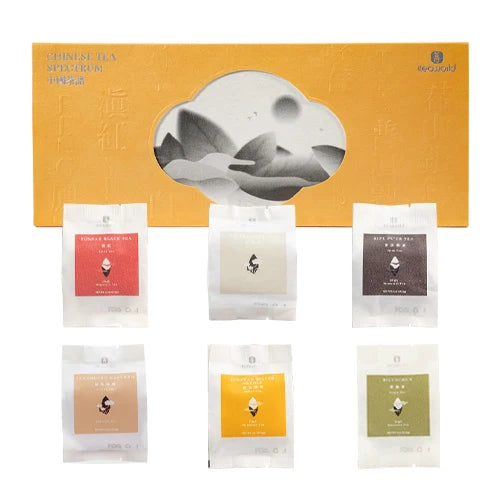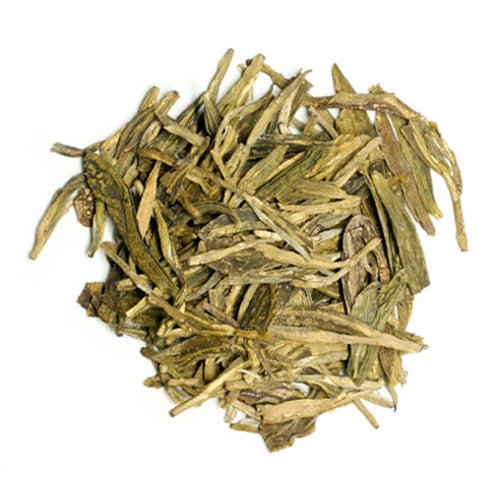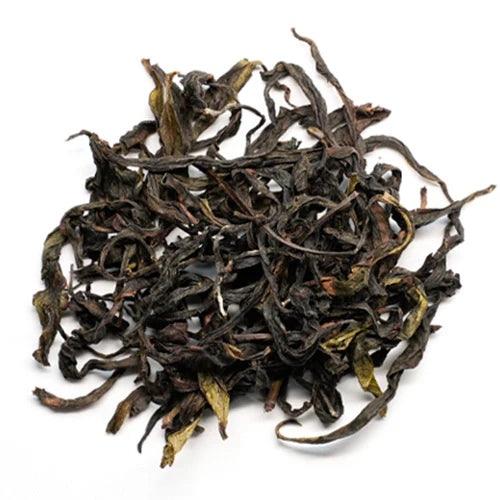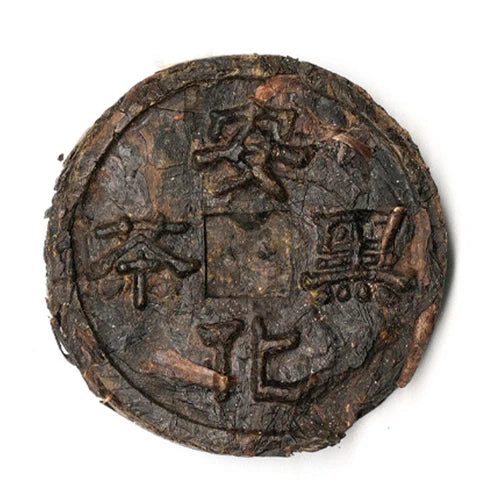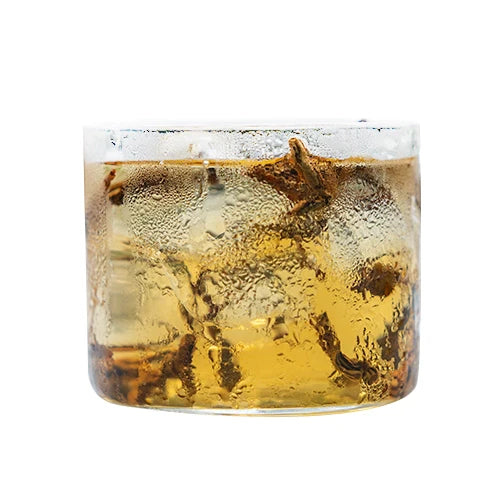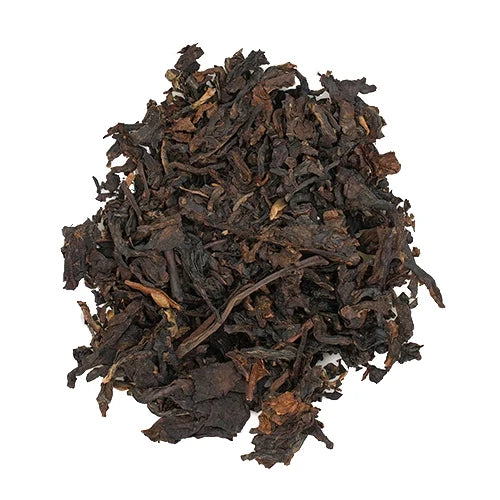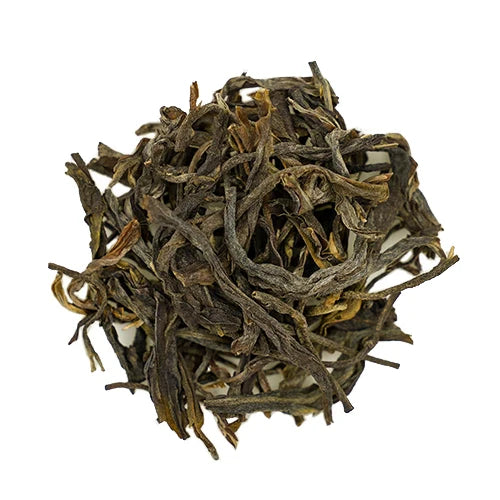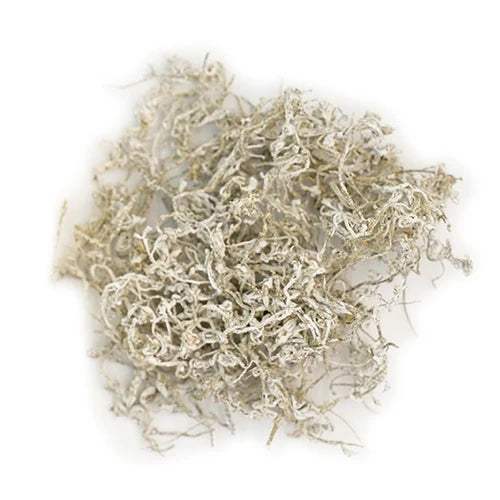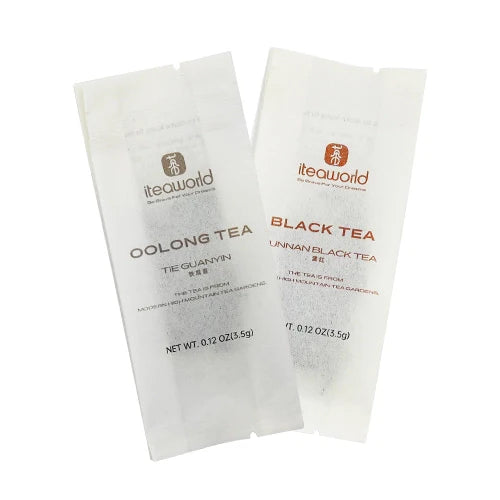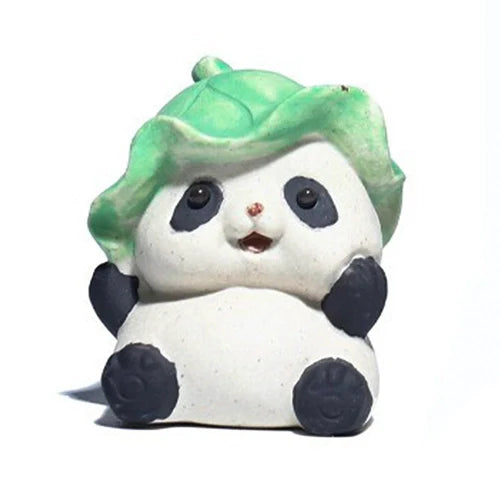Basic Knowledge of Oolong Tea

A Beginner’s Guide to Da Hong Pao: The King of Oolong Teas
If Longjing is the face of green tea, Da Hong Pao is the crown jewel of Wuyi oolong. This friendly guide answers the questions newcomers ask most: what it is, why it’s special, and how to pick a real one.
Type: Oolong (Wuyi rock tea)
Origin: Wuyi Mountains, Fujian, China
Key flavor notes: Floral, rock minerality, bold sweetness
Also known as: Da Hong Pao, "Red Robe"
What exactly is Da Hong Pao?
Despite the word “hong” (red) in its name, Da Hong Pao is not a black tea. It’s a semi-oxidized oolong, specifically a category of Wuyi rock tea (known in Chinese as Yancha). The special rocky soils of the Wuyi Mountains give it the famous yan yun—a mineral or “rocky” note—that sets it apart.
Where the name comes from — a couple of popular stories
There are a few versions floating around. Two of the most common:
The red-bud story: Young shoots on the original bushes sometimes appear reddish in spring—like a little red robe—hence the name “Big Red Robe.”
The scholar and the monk: A popular legend says a student was revived from exhaustion by tea at a temple. Grateful, he draped a red robe over the tea bush. From then on it was known as the “red robe” tea.
Quick history note: the name "Da Hong Pao" appears in texts from the Ming era, but the modern oolong processing method only became standardized much later—so the tea called Da Hong Pao today is not identical to the Ming-period tea that shared the name.
Four common ways people use the term “Da Hong Pao”
Broad factory label: Historically, some places labeled all Wuyi rock teas as “Da Hong Pao.” That’s a broad, not-very-precise use.
The original mother trees: There are six famous mother trees on the Jiulongke slope. These ancient bushes are symbolic—and protected. Note: since 2006, tea from those mother trees has largely been taken out of production and preserved.
Purebred Da Hong Pao (Qi Dan): When cuttings from a single mother-tree variety are propagated, that’s called a “purebred” or single-varietal Da Hong Pao. In 2012, local authorities formalized Qi Dan as the recognized original cultivar for Da Hong Pao.
Blended / commercial Da Hong Pao: The most common type on the market—masters blend leaves from different Wuyi varietals to create a balanced, repeatable flavor. This is what most people buy and drink today.
So—what should Da Hong Pao taste like?
Tea lovers often describe a great Da Hong Pao with four classic traits: bold aroma, clean flavor, mineral (rock) backbone, and floral notes. In Chinese you might see it summed up as 霸道甘冽、岩骨花香—which captures the idea of a powerful, clean, rocky, and floral tea.
Why the huge price range?
Terroir: “Zhengyan” (core rock) areas produce the classic Wuyi minerality and command higher prices than riverbank (alluvial) tea gardens.
Tree source: Is it a named cultivar? A protected mother tree cutting? Or a generic garden variety?
Craftsmanship & brand: Some producers are premium artisans; others are large factories that blend at scale.
Practical tip: avoid extremely cheap Da Hong Pao—those are often “re-baked” leftover tea or heavily roasted blends meant to mask low-quality leaf. You’ll taste a flat, burnt character rather than true Wuyi complexity.
How to choose a Da Hong Pao to start with
Start with a blended Da Hong Pao—it’s crafted to be approachable and balanced.
Try a sampler that compares terroirs—core rock vs. half-rock vs. zhoucha That helps you learn what “rocky minerality” tastes like.
Explore Qi Dan later if you want to taste a single-varietal Da Hong Pao’s depth.
Recommended teas to try
Qi Dan (purebred) Da Hong Pao — single-varietal depth.
Blended Da Hong Pao — classic, balanced, and often best for first-timers.
Wuyi rock tea packs (terroir sampler) — compare core rock / half-rock / riverbank.
Wuyi specialty sampler (rare & small-batch) — for enthusiasts who want to explore rarities.
Shop Da Hong Pao Collection Learn How to Choose Oolong
Prefer to sample first? Look for a 3–4 sachet sampler or a 10–25g trial pack — great for learning without committing to a big tin.
Quick buying checklist
Check the origin (Wuyi Mountains = good).
Look for a clear terroir description (core rock / half-rock / riverbank).
Avoid suspiciously cheap “authentic” claims.
Prefer brands with brew notes and lot dates.
How to brew a simple Da Hong Pao session (beginner-friendly)
Leaves: 6–8g for 150–200ml gaiwan or 3–4g for a 300–400ml teapot.
Water temp: 95–98°C (203–208°F).
Rinse: Quick 5–8 second rinse to wake the leaves, discard rinse water.
Steeps: Start with 8–12 seconds; add 5–10 seconds each round.
Note: Many infusions—enjoy the evolving cups.
Final thoughts
Da Hong Pao isn’t a single thing—it’s a family of teas, some mixed, some single-varietal, all tied to the rocky terroir of Wuyi. If you’re new: start with a blended version or a sampler, focus on quality over a bargain, and enjoy discovering the “rocky” notes that make it unique.
Want tasting notes & brewing tips delivered? Join our tea community for single-origin spotlights and limited samplers.
Join Discord Order a Sampler

The Origins of Chinese Oolong Tea
Where did oolong tea originate, and what fascinating stories lie behind its history? Let’s dive into the past and present of oolong tea and explore how it became the beloved tea we enjoy today.

Oolong Tea vs Green Tea--Why Some Oolong Teas Taste Like Green Tea?
Have you ever brewed a cup of oolong tea that looks and tastes just like green tea?
You might wonder if you got the wrong tea—or worse, if it’s a fake. But in many cases, it’s not a mistake. What you have could be a lightly oxidized Oolong.
Take our two teas, Biluochun and Tie Guan Yin, for example. At first glance, they look strikingly similar—both feature tightly rolled leaves and a vibrant green infusion. But don’t be fooled by appearances. So, how do you tell them apart?
Biluochun oolong tea Liquor color and aroma
Tie Guan Yin oolong tea Liquor color and aroma
What’s the Difference Between Lightly Oxidized Oolong Tea and Green Tea Processing?
1. Green Tea--Non-oxidized Teas
It skips oxidation entirely. The leaves are quickly heated to lock in freshness, giving them a bright, vegetal flavor. For example, Longjing (Dragon Well) and Biluochun are popular green teas with light, grassy profiles.
2. Lightly Oxidized Oolong Tea--Partially oxidized teas
Lightly Oxidized Oolong Tea is lightly oxidized (about 10%–20%) and processed through gentle rolling and shaking to bring out subtle floral or fruity notes. Tie Guan Yin (Iron Goddess) in its fresh, floral style and Sijichun (Four Seasons Spring) are classic examples.
High temperature rapid fixation of fresh green tea leaves
Oolong tea tumbling: Bruise leaf edges mechanically or manually to create red edges ("green leaves with red borders").
How to Distinguish Lightly Oxidized Oolong Tea from Green Tea by Aroma and Flavor?
1. Green Tea
Appearance: Bright green leaves, often flat or curled, depending on the variety.
Aroma: Fresh, grassy, and sometimes a bit nutty.
Taste: Crisp and refreshing, with a light sweetness and sometimes a touch of bitterness.
2. Lightly Oxidized Oolong Tea
Appearance: Leaves are tightly rolled or twisted, with hues of green and yellow.
Aroma: Floral and fruity, like orchids or honey, with a hint of complexity.
Taste: Smooth and layered, combining delicate floral or fruity flavors with a silky texture.
How to Brew Oolong Tea and Green Tea?
1. Green Tea
Water Temperature: Cooler (around 160°F–185°F) to preserve its delicate flavors.
Steeping: Quick brews, usually 2–3 infusions.
2. Lightly Oxidized Oolong Tea
Water Temperature: Slightly hotter (around 185°F–200°F) to release its complex aroma and taste.
Steeping: Great for multiple infusions—flavors evolve with each steep.
How Should We Choose?
1. Green Tea
Ideal for those who want a lighter, low-caffeine option that’s perfect for hydration or a gentle pick-me-up.
Best for: Fans of fresh, straightforward teas that pair well with light meals.
2. Lightly Oxidized Oolong Tea
Perfect for someone who enjoys exploring nuanced, multi-layered flavors. It’s great for savoring and unwinding after a busy day.
Best for: Tea enthusiasts ready to step up their tea game with something a little more sophisticated.
Tea Recommendations for Beginners
1. Green Tea Recommendations
Longjing (Dragon Well)
Flavor Profile: A classic with nutty and bean-like aromas, and a sweet, refreshing taste.
Best for: Those who enjoy traditional Chinese green tea flavors.
2025 Longjing First Flush Spring Green Tea
Biluochun
Flavor Profile: Rich in fruity and floral aromas, with a fresh, crisp taste and a clear, layered profile.
Best for: Those who like a sweet, delicate tea with a smooth, light flavor.
2025 Biluochun First Flush Spring green tea
Xinyang Maojian
Flavor Profile: This tea from Henan province has long, thin leaves and a fresh, green aroma. The taste is mellow and smooth with a subtle floral and bean-like note.
Best for: Tea lovers who appreciate a clean, fresh taste with a noticeable aftertaste.
Liu'an Guapian
Flavor Profile: Known for its large, thick leaves, this tea from Anhui offers a fresh, bean-like aroma with a hint of grassiness. The taste is light with a slight bitterness.
Best for: Those who enjoy a light, fresh tea with a bit of bitterness.
Premium Lu'an Guapian green tea
Huangshan Maofeng
Flavor Profile: A bright and fresh tea from Anhui, offering a subtle chestnut aroma and a smooth, sweet taste with a long-lasting finish.
Best for: Those who enjoy a clean, sweet taste with a delicate aroma.
2025 Maofeng First Flush spring green tea
Enshi Yulu
Flavor Profile: This tea from Hubei is grown in shaded conditions, preserving a sweet, delicate flavor with a hint of seaweed aroma.
Best for: Tea drinkers who love a sweet, fresh taste with a unique twist, especially fans of Japanese-style teas.
2025 Enshi Yulu First Flush spring green tea
Taiping Houkui
Flavor Profile: Known for its large, long leaves, this tea has a light floral aroma and a sweet, smooth taste.
Best for: Those who want to try something with an interesting appearance and a fresh, delicate fragrance.
Premium Taiping Houkui green tea
2. Lightly Oxidized Oolong Tea Recommendations
Tie Guan Yin
Flavor Profile: Fresh floral aromas, especially orchid, with a sweet aftertaste.
Best for: Those who love floral teas but don't want something too heavily roasted.
Premium Tie Guan Yin oolong tea
Sijichun
Flavor Profile: Honey-like sweetness with a smooth, velvety mouthfeel, perfect for beginners.
Best for: Those looking to try lightly oxidized oolong for the first time.
Wenshan Baozhong
Flavor Profile: Very lightly oxidized (around 10%), with a strong floral fragrance and a delicate, smooth taste.
Best for: Those who prefer subtle flavors and appreciate a strong aromatic tea.
Huangjin Gui
Flavor Profile: Unique osmanthus-like floral fragrance with a refreshing, light taste and a quick aftertaste.
Best for: Those seeking something different from traditional oolong tea with a sweet floral aroma.
Southern Fujian Oolong Collection--8 unique historical flavors
Alishan Light Roast Oolong
Flavor Profile: From Taiwan’s high mountains, this tea has a smooth, creamy texture with floral and milky notes.
Best for: Those wanting to experience the smooth, delicate taste of Taiwanese oolong.
Relaxing After Work with a Cup of Tea
If you’re after something clean and refreshing, green tea is the way to go. But if you want a tea that tells a story with every sip, lightly oxidized oolong tea is an adventure worth exploring. Why not try both and discover your favorite? After all, every cup is a chance to savor something special!

A Beginner’s Guide: How to Choose the Best Oolong Tea by Oxidation Level
Among the six major types of Chinese tea, oolong tea offers the most diverse range of flavors. You might taste floral, fruity, milky, or even woody notes in just one cup. The quality of oolong tea depends on many factors—such as the growing environment, processing techniques, and brewing method—all of which can influence its final taste. One of the most important factors, however, is the level of oxidation.
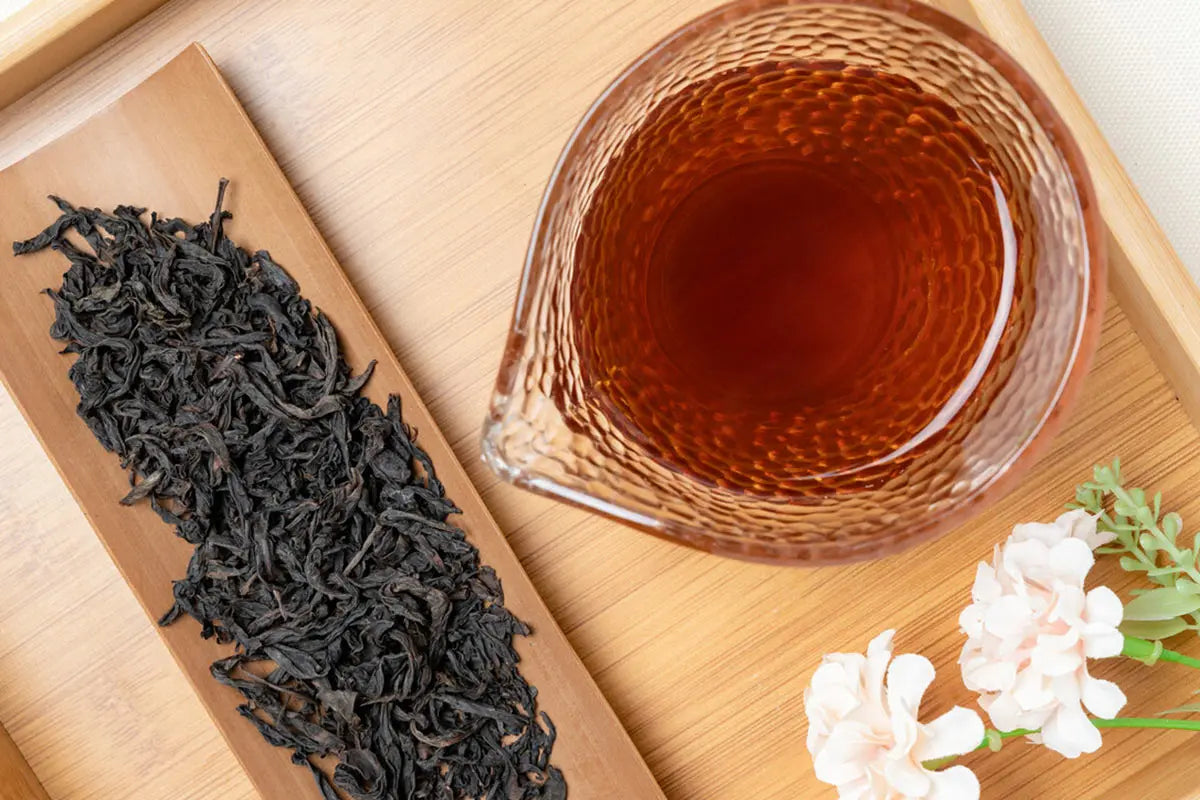
Is Da Hong Pao Oolong Tea Or Black Tea?
Believed to be of interest to those who appreciate loose-leaf tea, many are familiar with Da Hong Pao. Da Hong Pao has gained a great reputation due to its outstanding quality features and has garnered much admiration.
For those initially unfamiliar, it might be challenging to determine whether Da Hong Pao belongs to the category of loose leaf tea. This confusion may arise from the similarity in the color and taste of Da Hong Pao tea and black tea, leading some to mistakenly identify it as black tea. In reality, Da Hong Pao is a well-known variety of oolong tea.
About Da Hong Pao
Da Hong Pao is primarily produced in Wuyi Mountain, Fujian Province, and its tea leaves boast exceptional quality, making it a renowned Chinese specialty tea. Da Hong Pao stands out among Wuyi rock teas, with historical records dating back to the late Ming and early Qing dynasties. Da Hong Pao is resistant to multiple steepings, maintaining its fragrance even after seven or eight infusions. To truly savor the essence of rock tea, it is recommended to use small teapots and cups for a slow and meticulous tea-drinking experience when enjoying Da Hong Pao. If you want to experience the flavor of best loose leaf tea, be sure to give Da Hong Pao a try.
There is a legend about Da Hong Pao. It is said that during the Ming Dynasty, a scholar on his way to the capital for the imperial examination fell ill near Wuyi Mountain. Suffering from severe abdominal pain, he encountered a monk who brewed him a tea using a treasured tea, and the scholar's pain immediately ceased. After achieving the top score in the imperial examination, the scholar returned to thank the monk. When asked about the origin of the tea leaves, the monk removed his large red robe, circled the tea bushes three times, and draped the robe over the tea tree. Hence, it became known as "Da Hong Pao," meaning "Big Red Robe."
Characteristics of Da Hong Pao
Appearance: The tea leaves are thick, tightly rolled, and evenly structured, with a glossy appearance.
Aroma: The fragrance is rich, pure, resembling orchids and hints of cinnamon.
Liquor Color: Bright orange-yellow.
Flavor: Rich, mellow, and sweet, with no bitterness or astringency, leaving a lingering aftertaste.
Brewed Tea Leaves: Green leaves with a red border, and the veins are green and shiny.
Why Is Da Hong Pao Often Mistaken for Black Tea?
In reality, Da Hong Pao is a loose leaf oolong tea, not black tea. There are several reasons why Da Hong Pao is easily mistaken for black tea.
Firstly, the name Da Hong Pao contains the word "红" (hóng), which means red in Chinese. This can be confusing and lead to the misconception that Da Hong Pao is related to black tea.
On the other hand, the bright orange-yellow color of Da Hong Pao's brewed liquor is visually appealing. If Da Hong Pao is brewed for an extended period, the liquor may take on a reddish hue, resembling the color of black tea. Additionally, the rich and mellow taste of Da Hong Pao, especially when brewed longer, may be mistaken for the bold flavor commonly associated with black tea.
The color and taste of Da Hong Pao's tea liquor are related to its oxidation level. Oolong tea, in general, is a semi-oxidized tea, falling between black tea and green tea. Specifically, different varieties of oolong tea have different oxidation levels. For example, lightly oxidized oolong teas include the Light Aroma TieGuanyin and Wenshan Baozhong. Moderately oxidized oolong teas include the Strong Aroma TieGuanyin and Fenghuang Dancong. Highly oxidized oolong teas include Bai Hao Oolong and Da Hong Pao. In contrast, black tea is generally fully oxidized, with varying levels of oxidation among different black tea types. Overall, the oxidation level of black tea tends to be higher. From the perspective of oxidation, highly oxidized Da Hong Pao and highly oxidized black tea can exhibit similarities in aspects such as tea liquor color and taste.
In reality, through multiple tastings, it is possible to discern the differences between Da Hong Pao and black tea. High-quality Da Hong Pao has a mellow and thick tea texture, with a strong and lingering taste. In comparison, the overall sensation of black tea is generally gentler than that of Da Hong Pao. To appreciate these differences, it is recommended to taste and compare various teas. It's advisable not to purchase large quantities of full-sized teas initially, but rather to explore and compare by buying tea sampler for a more convenient and economical experience.
Da Hong Pao Is a Renowned Variety of Oolong Tea.
Whether a tea is classified as oolong or black tea is determined by its production process. Oolong tea typically undergoes processes such as Weidiao(withering), Zuoqing(shaking), Shaqing(Killing green), Rounian(rolling) and drying. The production of black tea involves Weidiao(withering), Shaqing(Killing green), Rounian(rolling), oxidation and drying processes.
The production process of Da Hong Pao follows the typical crafting methods of oolong tea, including the unique step of Zuoqing(shaking), which is characteristic of oolong tea. This Zuoqing(shaking) process not only imparts Da Hong Pao with a distinctive and rich aroma but also results in the unique feature of the leaves having a "green leaf with red edges" appearance. When brewing Da Hong Pao, it's interesting to observe the brewed tea leaves, which exhibits a fascinating alternating pattern of red and green characteristics.
In addition to the distinctive production process, the environment in the core production area of Da Hong Pao, Wuyi Mountain, is a key factor in shaping the unique characteristics of Da Hong Pao. The tea trees in the Wuyi Mountain region where Da Hong Pao is grown thrive in the cracks of rocks, benefiting from ideal natural conditions such as sunlight, moisture, and temperature for tea tree growth. The entire Wuyi Mountain area, spanning hundreds of miles, is characterized by red stone cliffs, and the soil in the rock crevices is loose, well-ventilated, and rich in minerals. This is a primary condition for nurturing the unique quality of Da Hong Pao. Da Hong Pao grown and produced in such an environment exhibits a distinct and pronounced Yanyun(rock rhyme). Yanyun(rock rhyme) refers to the tea leaves absorbing mineral components from the rocks in their growth environment, resulting in unique taste characteristics. When tasting Da Hong Pao, one can sense its robust flavor, with the tea liquor carrying a subtle hint of mineral notes, providing a lingering aftertaste. The unique flavor of Da Hong Pao makes it suitable for both daily consumption and gift-giving. It is especially well-suited as Christmas tea and New Year tea.
The fact that Da Hong Pao is a type of oolong tea, not black tea, might be initially confusing. In reality, through understanding its production process and the appearance of the tea leaves, it becomes clear that Da Hong Pao is indeed an oolong tea. New tea enthusiasts can easily distinguish it after a few tastings.

Oolong Vs. Green Tea-Everything You Need to Know
Tea is undoubtedly a tasty and healthful beverage that helps you unwind in the evening and gets you going in the morning. Green and oolong teas are the most popular among tea connoisseurs. Both are regarded as authentic teas and are acknowledged as agents of good health in conventional medicine as well as by a growing number of researchers.
Tea enthusiasts are familiar with both oolong and green teas; the former for their tastes, which vary from fruity to nutty, and the latter for its numerous health advantages. Whether you're a seasoned tea drinker or a newbie to the world of tea, you might be wondering about the best loose-leaf tea.
What is Oolong Tea?
Since oolong tea is brewed from the leaves of the Camellia sinensis plant, commonly referred to as the tea plant, it is considered a real tea. In Asia, it is among the most widely consumed varieties of tea. It is most often grown in Taiwan and the Chinese province of Fujian, where it is referred to as "black dragon tea" or wulong tea. After being exposed to intense heat and drying, the tea leaves are oxidized, twisted, and curled into tiny beads or their characteristic long, curly spindles.
Oolong tea leaves can have oxidation levels ranging from 8% to 85%, which dramatically changes the taste profile. Some oolong teas, like Se Chung, have a fruity, sweet flavor and smell like honey; others have an earthy, woodsy flavor and smell like roast. Naturally occurring caffeine may be found in oolong leaves, however, the amount in tea varies depending on cultivation and processing methods. Compared to other green teas, a loose leaf oolong tea often has more caffeine. This implies that oolong tea may have more negative effects for those who are sensitive to caffeine than green tea.
Oolong tea can be brewed in elegant clay yixing pots and gaiwans, among the traditional brewing methods that make brewing tea a fascinating experience. Oolong tea, one of the traditional teas that represent the finer features of brewing and drinking tea, is a classic real tea. Tieguanyin, Da Hong Pao, and Wuyi Mountain oolong teas are popular teas of tea samples.
What is Green Tea?
Green tea is also prepared from the leaves of Camellia sinensis, the same plant as oolong tea. Green tea is indigenous to China, much like oolong tea. The loose leaf green tea is grown extensively throughout India and other parts of Asia, however, China still supplies 80% of the world's supply. Leaves that are grown in either the sun or the shade are collected three times a year to make green tea.
Green tea comes in a variety of forms, and the varieties vary greatly among the nations that produce it. The most well-liked Chinese green teas are Gunpowder and Chun Mee. Japanese green teas like matcha, sencha, and genmaicha are popular. Except for matcha green tea, which has the highest caffeine amount of any genuine tea, green teas have caffeine content comparable to that of oolong teas. Green tea sampler comprises a variety of green teas, is an ideal option to enjoy the variety of flavors.
What’s the Difference?
Apart from their obvious color differences (oolong tea is often a light brown, whereas green tea is a brilliant green), oolong and green tea have distinct flavor profiles and production processes that combine to create a unique combination. Although the Camellia sinensis plant is used to make both oolong and green tea, there are distinctions in the processing methods.
Processing
Green tea undergoes no fermentation at all, while oolong tea does. This indicates that the oxidation process, which involves drying the tea leaves over several weeks, is a step that all oolong teas undergo. Compared to green teas, which are not oxidized, the leaves have a deeper brown hue due to their exposure to oxygen.
In contrast, green tea is dried right away after harvesting through the use of traditional techniques like sun-drying or charcoal-firing. Steaming and oven drying are two more common contemporary techniques that provide higher output.
Flavor
Oolong teas can taste earthy and woodsy or fruity and nutty. Among all the actual tea varieties, oolong tea has the most varied flavor characteristics. The new oolong tea sampler boasts a rich and nuanced flavor profile, seamlessly incorporating the delicate floral notes and subtle earthiness characteristic of high-quality oolong teas.
In terms of flavor, green tea is far more vegetal. Strong tea aficionados adore its flavor, which is often characterized as grassy and has a bitter undertone that gives it a sharp edge.
Health Benefits
When it comes to antioxidant content, Oolong tea beats Green tea since it has more than Green tea. However, in the fight for weight reduction, Oolong tea and green tea share the upper hand.
Even one cup of oolong tea each day might hasten the process of losing weight. It has qualities that help improve fat mobilization and speed up metabolism, which can combat obesity. Oolong's antioxidants may give your skin a healthy, glowing appearance. Applying an oolong leaf tea rinse to your scalp can promote hair development, giving your hair a more glossy, thick appearance. This traditional drink, which is semi-oxidized, is also said to strengthen the heart.
Caffeine Content
We become alert when we consume enough caffeine. The caffeine content of green tea and oolong tea is the same. Although some claim that the amount of caffeine in a cup of either tea ranges between 35 and 75 mg, a cup of either has 70 mg of caffeine. Oolong or green tea are better options if you want to avoid the jittery effects of caffeine, as a cup of coffee contains 200 milligrams of the stimulant.
Whether you’re team oolong or team green tea, you can enjoy both this season — iTeaworld’s Black Friday Celebration (Nov 3–Dec 1) brings 25% off all teas and 50% off green teas.
Recommended Oolong & Green Tea
Loose leaf oolong tea:
1. Tie Guanyin
If you like a lighter taste, then don't miss Strong-aroma Tieguanyin and Light-aroma Tieguanyin. This is a tea known to everyone in China. Anxi Tieguanyin is especially famous. If you want to buy Tieguanyin, please note that the origin must be Anxi's.
If you're interested in strong-aroma Tieguanyin or light-aroma Tieguanyin, feel free to click the link.
2. Da Hong Pao
If you like a rich and multi-layered taste, then you must try Da hong pao. Another well-known Chinese loose leaf oolong tea. Dahongpao is known as the king of teas. Premium Dahongpao sells for a surprising amount of money. Dahongpao has a unique flavor and is well worth trying!
Da Hong Pao oolong tea for Daily Use 100g
If you're not sure how you like your oolong tea, then we suggest you start with the Oolong Tea Sampler to be able to sample a variety of oolong teas at once.
Oolong Teas Collection – Top 10 Classic for Beginners 100g
Loose leaf green tea:
1. Longjing Tea (Dragon Well)
If you haven't tried Dragon Well tea, you'll be sorry you didn't get to savor the springtime taste of southern China. Longjing tea represents the freshness and elegance of southern China.
2025 First Flush Spring Tea Collection 100g
2. Biluochun
Biluochun is also one of the loose leaf green teas you can't miss, with its unique curly shape like a spring snail, another cup of spring flavor.
2025 Biluochun First Flush Spring green tea 50g
Of course, there are many green teas in China, and you can try a variety of green teas at the lowest cost by trying the green tea sampler.
2025 First Flush Spring Tea Collection 100g
Where Can I Buy the Best Loose-Leaf Tea?
Loose-leaf teas can be purchased from tea stores or online. iTeaworld is the greatest option for tea lovers looking for a wide variety of teas. Offering a large selection of tea types, each with unique and diverse tastes, makes iTeaworld stand apart.
It offers a wide selection of loose-leaf tea that suits different tastes, regardless of your level of experience with the tea. But when you are shopping for tea, don't forget to take into account things like the tea's provenance, preparation technique, and freshness. To guarantee the best quality and discover the diverse range of tastes that loose-leaf tea has to offer, use reliable suppliers like iTeaworld.
Curious to taste the difference yourself? Visit iTeaworld’s Black Friday deals and explore authentic oolong and green teas with exclusive savings and gifts.
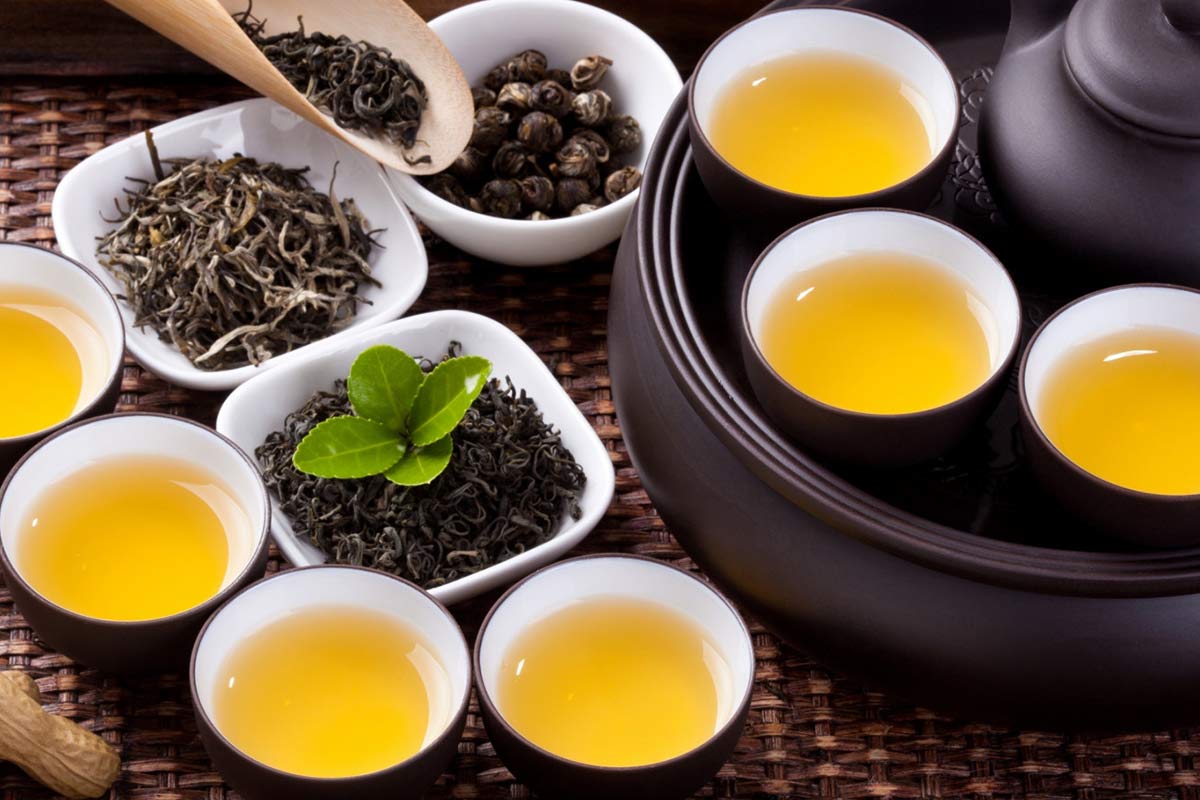
10 Interesting Facts About Oolong Tea
If you like tea, you must know about oolong tea.But how much do you know about oolong tea?Here is an article that will help you quickly learn more about oolong tea
1.Why is Oolong Tea also known as "Qing Cha"?
Oolong tea is a partially fermented tea that has a greenish-brown hue resembling iron, hence the name "Qing Cha" or Green Tea. Its leaves are green in the middle with red edges, giving it the nickname "green leaf with a red border." Oolong tea combines the best qualities of both black and green teas. It undergoes a process of partial oxidation and is usually made from more mature leaves, giving it a somewhat robust appearance. It's also known as the "slimming tea," aiding in digestion, diuresis, and weight loss. Additionally, oolong tea has strong anti-allergic and anti-cancer properties.
2.Where is the homeland of Oolong Tea?
Fujian province is the birthplace of oolong tea, boasting a rich variety including Tie Guan Yin, Shui Xian, Wuyi Cinnamon, Baozhong, and Golden Osmanthus. Oolong tea, a signature Chinese tea, is primarily produced in Fujian, Guangdong, and Taiwan provinces. The processing technique for oolong is the most complex among the six major tea categories.
3.How is Oolong Tea categorized?
Based on origin and processing methods, Oolong can be classified into Northern Fujian Oolong, Southern Fujian Oolong, Guangdong Oolong, and Taiwanese Oolong. Northern Fujian varieties include Tie Luo Han, Northern Shui Xian, Da Hong Pao, and Wuyi Cinnamon, while Southern Fujian varieties cover Anxi Tie Guan Yin, Ben Shan Oolong, and Golden Osmanthus. Guangdong Oolong includes Fenghuang Dancong, Phoenix Shui Xian, and Lingtou Dancong, while Taiwanese Oolong features Dong Ding Oolong and Wenshan Baozhong.
4.How is Oolong Tea made?
The processing of oolong tea is the most intricate among the major loose leaf tea categories. The basic steps include sunlight withering (or sun drying), indoor withering (or cool drying), shaking, "killing the green," initial rolling, wrapping, and drying. The purpose of withering is to reduce moisture, allowing for proper fermentation. The shaking process creates oolong's unique "green leaf with a red border" appearance and its special aroma. "Killing the green" stops the oxidation, preserving the quality achieved. Rolling shapes the tea and releases its juices, while drying removes excess moisture and bitterness, accentuating the aroma.
5.What are the characteristics of Oolong Tea?
Oolong is known for its "green leaf with a red border," a rich, sweet aftertaste, and a combination of the freshness of green tea and the mellowness of black tea. Drinking oolong offers a unique throaty resonance; Wuyi rock teas provide a "rock resonance," while Anxi Tie Guan Yin has a melodious resonance.
6.Is less stem better for Oolong Tea?
Not necessarily. The presence of stems in oolong tea doesn't mean it's of lesser quality. Oolong tea is usually harvested with two to three leaves, commonly called "open-face plucking." This plucked tea often contains stems, which can enhance the tea's richness. Additionally, if oolong tea is well-aged, it can provide a better aftertaste and more authentic aged aroma. Therefore, the presence of stems isn't a major criterion for evaluating oolong tea's quality.
7.Does Oolong Tea come in many colors?
Yes, depending on its origin and type, oolong tea can vary in color. Its hues range from a bright light yellow to a vibrant orange-yellow and orange-red. Lighter colored dry teas are less fermented, resulting in a paler infusion, whereas darker ones yield a deeper-colored brew.
8.Why should we use boiling water (100℃) to brew Oolong Tea?
Oolong tea is made from matured buds and leaves and generally requires a larger quantity for brewing. The aromatic compounds in oolong are best released at higher temperatures, so boiling water is ideal.
9.What are the three taboos of drinking Oolong Tea?
When enjoying oolong, remember these three prohibitions: avoid drinking it on an empty stomach to prevent feelings of hunger or dizziness; refrain from having it right before bed to ensure a good night's sleep; and don't drink it cold, as this can upset the stomach due to its cold nature.
10.Which tea vessels are suitable for Oolong Tea?
Oolong is best brewed in Yixing clay teapots or covered white porcelain cups. These vessels not only allow one to appreciate its aroma but also retain it. The deep hue of Yixing clay pots particularly complements oolong's aged aroma.






